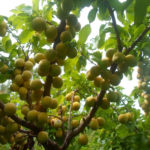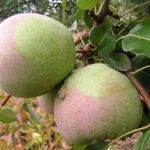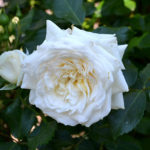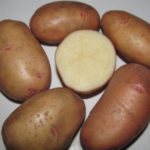Fir-tree prickly Bonfire
Thorny spruce, also called Colorado spruce, grow naturally in the west of North America. They are known for their frost resistance, slender crown, unusual shade of needles. It is not for nothing that breeders of the Old and New World drew attention to them, and even in the middle of the 19th century.
Interesting! The first "blue spruces" (so often called prickly spruce) appeared in the Russian Empire in 1858, they were planted in the Nikitsky Botanical Garden of Crimea.
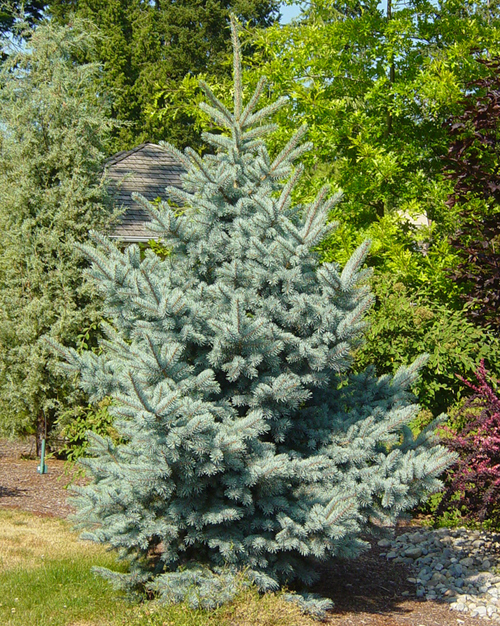
For a century and a half, many varieties of this species have been created in various nurseries, sometimes completely unusual in shape and size. But the old, classic varieties are still "in service", which, like good wine, do not deteriorate over the years. The variety Koster (Picea pungens Koster) can undoubtedly be included among these.
A little about the origin
There is little information in the literature on this issue. Perhaps the reason is that the spruce was created a long time ago, in the very first years of the last century. There is information that the variety was registered in Holland, in 1901, as a new garden form from a nursery in the town of Boskop. At that time, the owner of the nursery was Ari Koster, and the spruce was named after him.
But it is worth noting that, apparently, this spruce as a new variety was created earlier; in any case, information has been preserved in the literature that it went on sale at the end of the 19th century.
It can be said for sure that over such a long time, Koster has become one of the most popular and recognizable blue firs of the Old World, and in other parts of the world it is "in sight" as well. Do not count how many memorials, monuments, solemn places in different countries are decorated with exactly this sort of trees. Let's get to know him!
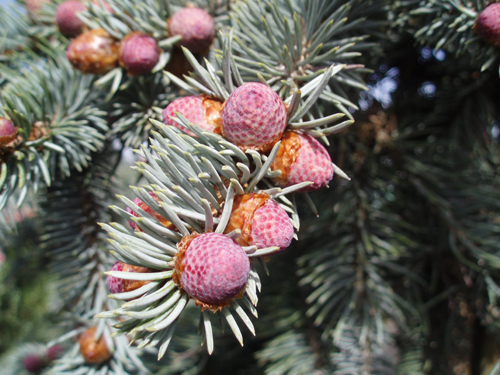
Description of appearance
The crown is regular, pyramidal, with a slope towards the wide-conical. At the age of ten, a spruce usually has about 3 meters in height, but over the years it can grow up to 10-15 meters, with a diameter of about 5 meters. In conditions of good care, it increases its growth by 15-20 cm annually, thus being a tree with an average rate of development.
Important! In the first years of life, the lower branches grow faster than the upper ones, which is why the crown is often asymmetrical. Over the years, especially after 10 years, this flaw goes away, the form acquires harmony and symmetry.
The needles are silvery-blue, sometimes (depending on the growing conditions) they can be darker, bluish-green. The needles with a waxy coating, rigid and prickly, about 2.5 cm long, have a slight crescent curvature. They are located tightly on the branches, creating a solid impenetrable surface. From time to time, but not annually, in the spring, purple-red cones 6-10 cm long appear on the branches, which turn brown with age.
Shoots grow densely, hanging slightly downward, thus demonstrating some form weeping.
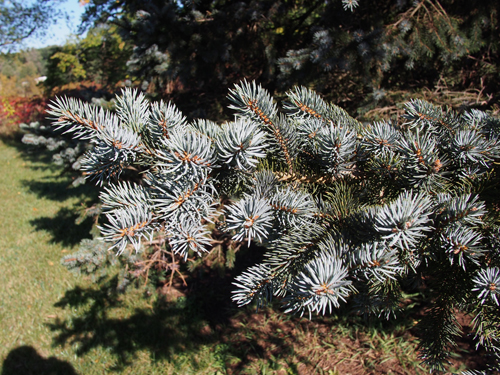
Features of agricultural technology
The variety is distinguished by its unpretentiousness, resistance to various adverse influences, including increased gas pollution. This is one of the most frost-resistant spruces; in adulthood, it tolerates temperature drops to -40 ° without problems. At the same time, the plant is able to develop at constantly high temperatures, with the condition of regular watering and irrigation of the crown.
It is undemanding to soils, but does not like either completely depleted or overly fertilized. The main thing is that the earth is not overconsolidated, and there is no stagnation of water in the root zone.
Pruning of this spruce is most often unnecessary, but it is often used if the trees are planted as a hedge or alley. Koster tolerates this procedure easily.
This variety is photophilous, in the illuminated areas the needles become lighter, more refined.But it can also grow when shaded, which is often observed in the case of dense plantings along the alleys.
Use in horticulture
For many decades, the variety was known mainly as a "ceremonial guard". They loved to plant it near various commemorative memorials, monuments, from it they formed alleys near important administrative buildings.
And only in the last 20-30 years it migrated to garden and summer cottages, although the previous "ceremonial" functions have also been preserved. Now recommended as a plant for gardens and parks, in composition with other conifers and decorative deciduous trees. It is also good as an accented specimen plant. Looks appropriate in wide, spacious areas that are not constrained by either size or an abundance of other trees.
